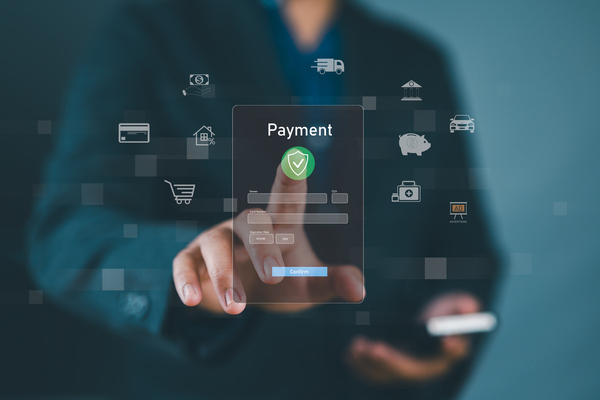Digital flexibility in a physical world
Sponsored by AEVI
The growth of the internet and ecommerce in recent years has introduced online merchants and customers to a whole new world of possibilities from a payments perspective. The digital world is built on the principles of connectivity and efficiency, creating a checkout and payments system that is not just highly efficient and flexible but which also provides additional benefits in the form of data integration and insight for all its various stakeholders.
But this efficiency and flexibility in digital payments has only served to highlight the cumbersome and antiquated processes associated with in-person payments, which still account for a significant majority of transactions.
The current in-person checkout process is a one-way communication street, based around rigid card payments that are also highly fragmented as a result of local adaptations and regulations. Payment devices themselves are constrained by the specific quirks of local card processors, meaning merchants are tied to that provider and unable to offer the payment flexibility enjoyed by online customers. The entire analogue design and legacy nature of in-person commerce dates back to the last century, and is in desperate need of an overhaul.
The emergence of digitally native generations who have grown up using internet technologies means this is no longer sustainable. Customers expect a digital flexibility in form of customer centricity, seeing the once static point-of-sale becoming a mobile point-of-interaction that comes to them, allowing them to pay with their preferred payment method, rather than the one offered on the terminal.
A good example can be found in the mobility space. What started with pay-at-pump with your credit card is currently expanding to digital payment methods, such as PayPal or BNPL. The shift to electric vehicles will drive this change even more, requiring mobility merchants to redesign their whole customer experience, as the car becomes the point of interaction.
Merchants need to react to the shift in customer behaviour. The rise of digital payments and the lifestyle economy, which has been accelerated by the pandemic, means the boundaries between in-person and online payments are blurred. They need to tie-in their in-person payments with their ecommerce offering to benefit from a single source of information, regardless of how or where the payments have been made.
To do so, they need to be able to consolidate transaction data across channels and territories, introduce and change partners, and roll out new initiatives and features in a holistic manner. And this is where the analogue nature and silo-based structure of in-person payments becomes their Achilles heel, being highly cost-intense with dramatically reduced innovation speed. Yet they are not the only ones who struggle, as payment providers – both new entrants and more traditional players, as well as internet service providers and even acquirers as the go-to merchant-enablers – suffer from the same limitations.
Until now, all of them have had no choice but to accept the current situation, largely due to the physical presence of the terminal. Changing providers would mean replacing the terminal itself with another, creating inevitable delay and potential lost business for merchants, as well as inconvenience for customers.
This is where orchestration comes into play. Previously only attributed to ecommerce, there is now an alternative platform available, delivering digital flexibility to in-person commerce. Combining digital design principles and the latest cloud-based technologies with open standards (such as Android or nexo) and a partnership-based approach, the platform logically separates the payment terminal from back-end processing and secure card payments from value-added service data.
In short, the platform takes away the complexity associated with the physical nature of the payment terminal, dissolving the crusted connection between the terminal and processor. This provides the stakeholders of the platform with the freedom to choose and exchange business and processing partners without interrupting merchant operations, and to dynamically route payments and data across territories, channels, partners and endpoints.
Being able to assume responsibility for their own estate provides them with the ability to digitally enhance their in-person checkout-flows, connect their in-person with their ecommerce channel and use the harmonised data exchange to ultimately create better solutions for their respective customers.
As the platform addresses an industry challenge, it does not only benefit merchants, but all providers of the payments value chain, from traditional acquirers to PSPs, Payfacs and internet service providers. All benefit from more streamlined operations, improved processing stability, significant cost reductions, faster time to market, better business insights and access to innovation.
Offering such flexibility around the in-person checkout means providers can rapidly increase their customer base, including moving into other countries. Merchants, too, will find international expansion far easier without being reliant on a local payment provider or acquirer operating in a silo. Vitally, it allows them to adopt their checkout experiences to an ever-changing customer mindset in a highly flexible and fast way.
The boundaries between in-person and online payments are blurring. It’s time payment service providers caught up, and positioned themselves to offer the kind of flexibility seen in digital payments in the physical world, offering more meaningful solutions for merchants and growing their own business in the process.
To find out more about how Aevi’s platform could help your business, visit aevi.com
By Martin Herlinghaus, Platform Specialist, Aevi

Business Reporter Team
Most Viewed
Winston House, 3rd Floor, Units 306-309, 2-4 Dollis Park, London, N3 1HF
23-29 Hendon Lane, London, N3 1RT
020 8349 4363
© 2025, Lyonsdown Limited. Business Reporter® is a registered trademark of Lyonsdown Ltd. VAT registration number: 830519543





